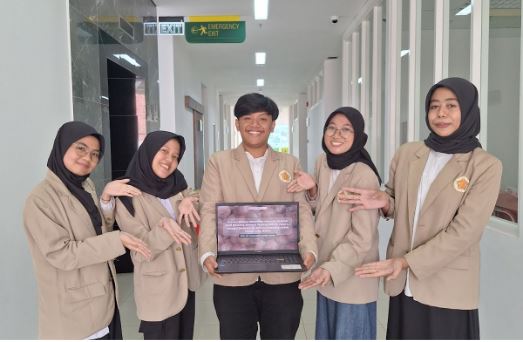
Burns are a type of injury that involves tissue damage caused by the transfer of energy from direct contact with heat, radiation, chemicals, or electricity. They are challenging to heal, and their treatment involves stabilizing the patient, preventing infection, and optimizing functional recovery.
Burn victims are at risk of experiencing complications from infections and systemic issues, depending on the extent and depth of the burn, the patient’s age and general condition, as well as any existing comorbidities.
In Indonesia, burn injuries have a relatively high prevalence, affecting 1.3 percent of the entire population.
Recognizing the importance of developing burn treatments, five students from Universitas Gadjah Mada (UGM), who are part of the Acenofer Team, have created a new approach to address this issue by utilizing yellow onion skin waste as a form of bilayer nanofiber preparation.
The five UGM students involved in this research are Naufal Ahmad Fauzy (Pharmacy 2021) as the team leader, along with four colleagues: Zulfa Nailil Muna (Physics 2022), Puspita Nur Rahmawati, Tika Nur Amini, and Erwinda Dwi Chofifah (Biology 2022).
Dr. Retno Murwanti mentored them, and the team’s Student Creativity Program in Exact Science Research (PKM-RE) has successfully received funding support from the Ministry of Education through the Directorate of Learning and Student Affairs (Belmawa).
Naufal Ahmad Fauzy explained that the Acenofer team used yellow onion skin in their research due to its high quercetin content. The use of otherwise discarded skin waste also contributes to environmental preservation.
“The research activities we conducted were very engaging as we explored the extract content and tested it on animal subjects, which was a precious experience for me and the team,” said Tika Nur Amini at the UGM campus on Monday (Aug. 5).
In this research, the students modified the preparation using bilayer nanofibers to enhance the extract’s penetration into the wound and prevent infections.
Zulfa Nailil Muna added that the research process was carried out in several stages over four months. The Acenofer team’s research began with extraction, preparation, characterization, in vivo testing, and data analysis.
The characterization involved various parameters, including SEM analysis, FTIR, tensile strength, and contact angle testing. The in vivo testing was followed by histopathological analysis to observe the healing process in the skin layers. Muna explained that their research yielded quite interesting results.
“The nanofibers were successfully produced with good quality, were not easily damaged, had a structure of appropriate size, and the in vivo testing showed wound closure by the preparation,” said Muna.
She hopes this nanomaterial-based preparation, which utilizes onion skin waste, can become an alternative treatment that leverages Indonesia’s natural resources.
Additionally, she hopes the research continues toward clinical trials and commercialization, making it a treatment accessible to the broader public.
Author: Agung Nugroho

